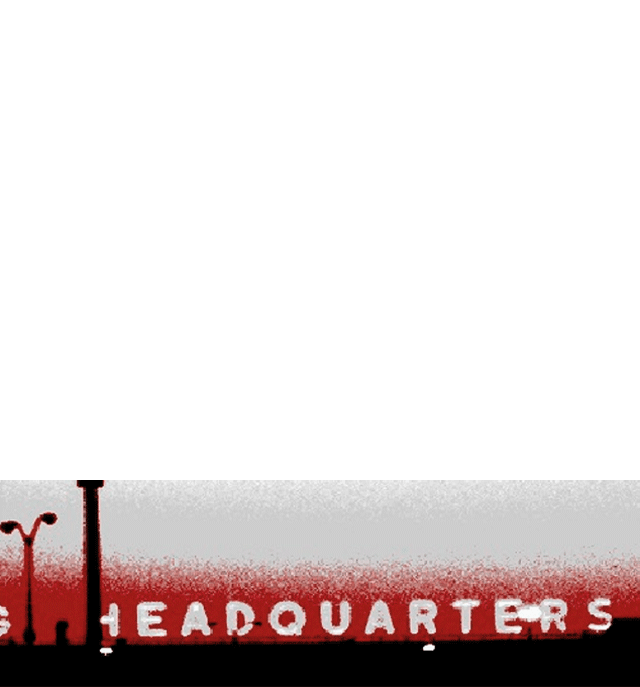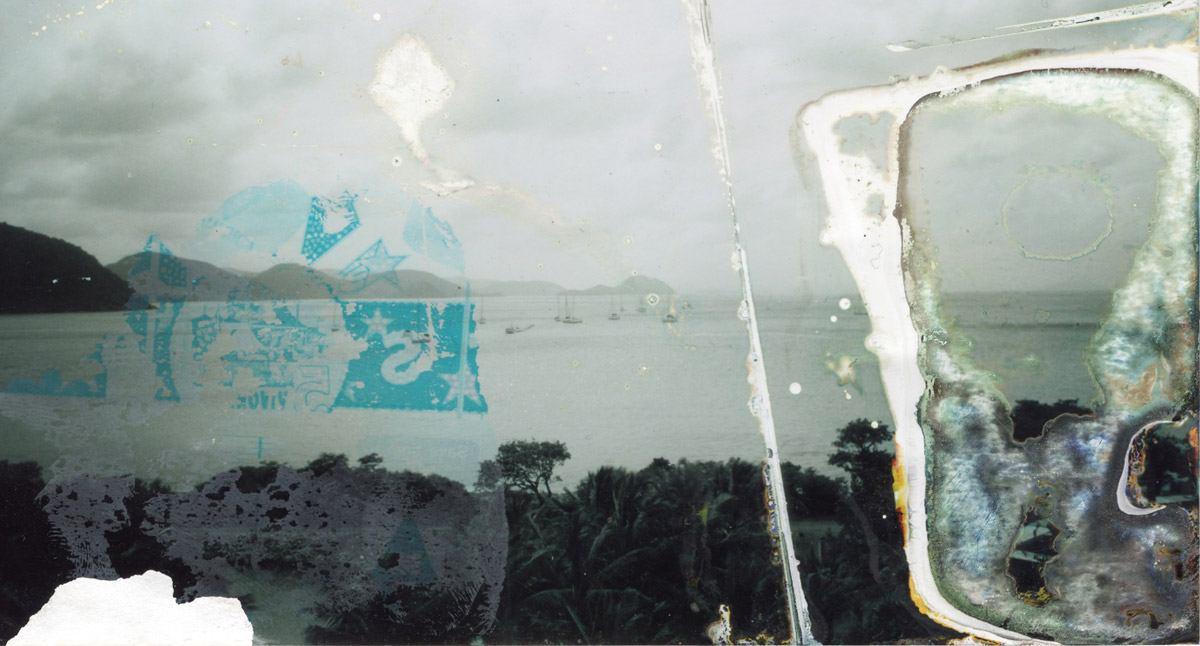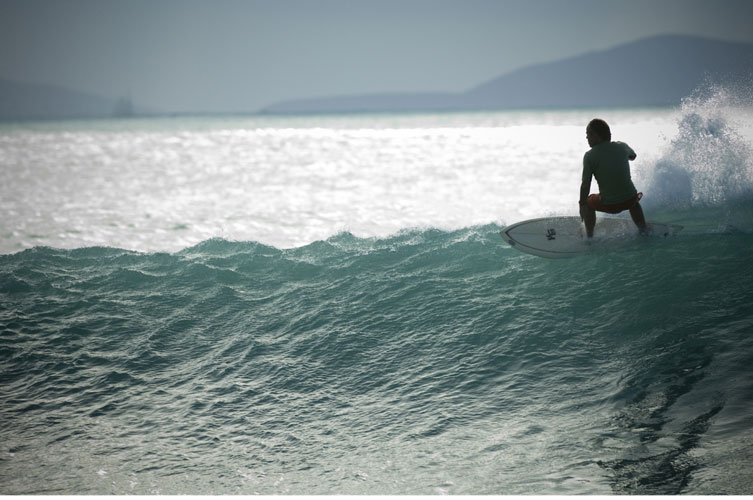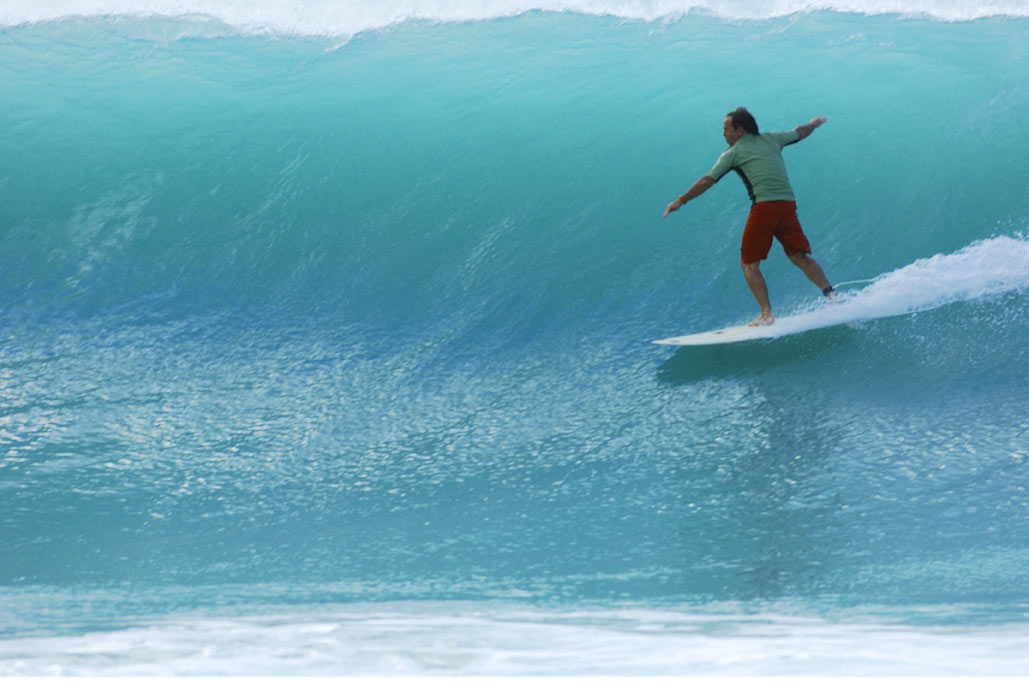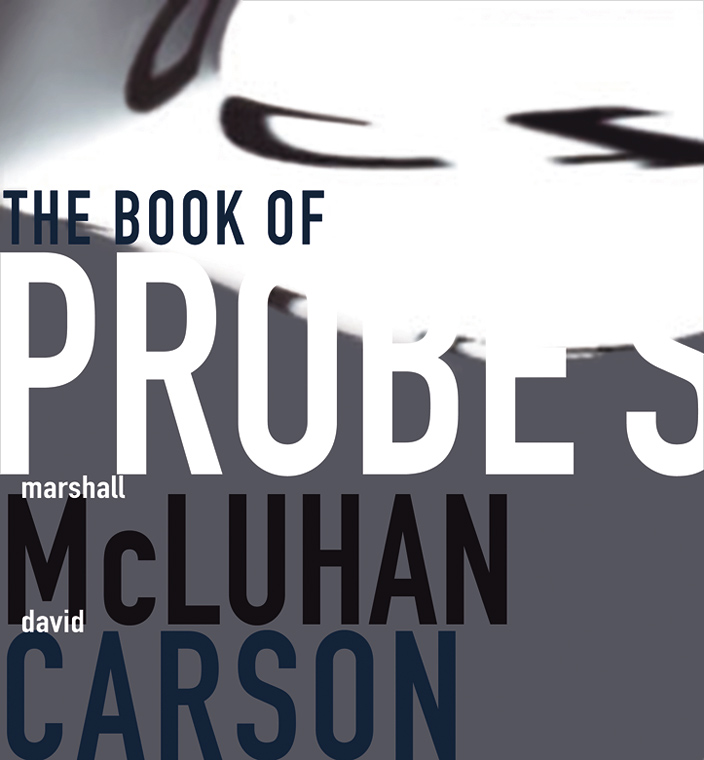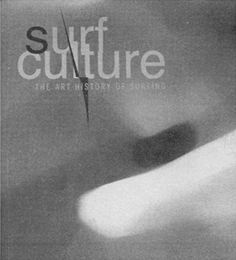
SURF CULTURE: THE ART HISTORY OF SURFING
Review By Mike Fish, ‘ESM’
In last issue’s Surf Art feature (Vol. 12, #88), ESM posed the following question: Surfing-art or sport? A related riddle would be: Ls there a difference between the surfer who makes art and the artist who surfs? The answers to these ambiguous musings certainly don’t come easy, but the newly released print masterpiece Surf Culture: The Art History of Surfing dips deep below the surface to explore the relationship between the two different- yet ultimately related-forms of expression.
This book is truly one of a kind-but in many different ways. Realistically, you could write three separate reviews for Surf Culture, from the standpoints of literary topic, photography, and layout. Encased in a top-quality binding, it’s a vast historical reference; a photographical tour-de-force; and a portable art gallery in your hands. Pour all that into multimedia award winner David Carson’s legendary design blender, and you’re sipping one hell of a verbal and visual cocktail-and a potent one at that. It’s a lot to digest for even the most sophisticated palate. But take your time and imbibe slowly, because if you savor each sentence, piece of imagery, and mind-blowing layout-you’ll definitely close the pages satisfied… and even a little buzzed.
From the 200-pound balsa planks and romantic curl searches of the early 1900s to the present day’s flyweight tri-fins and internet surf forecasting, the book takes an inventive look at the themes that coalesce surfing, art, and pop heritage. Surf Culture works to define the sport’s progression (spiritually, physically, and industrially), and its uncanny impact in the realm of art, while dispelling some of the nebulous myths accompanying its rise to popularity. “Kids in Kansas bolted surfboards to the tops of their cars in homage to the imagined surf lifestyle,” Craig Stecyk-longtime surf/ skate scene observer and co-author of the screenplay to the film Dogtown and Z-Boys-writes in the introduction. “The marketing frenzy, led by non- surf types, redefined the parameters of popular culture.”
For the surf veterans in our tribe, the opus provides a nostalgic ride down the sacred memory line, while the rising grommet or newcomer practically finds a unique education full of glimmering treasures and unmatched heritage. Hundreds of illustrative color photos, art in every conceivable form, arresting pull-quotes, and six kinetic essays weave the plotline. The narrative runs similar to a series of short, creative historical tales that connect-kind of like a film by Quentin Tarantino or Oliver Stone. Carson’s signature, beyond-the cutting-edge design flows like a collage, making you feel like you’re flipping through a salient scrapbook or intricate mixed-media surf diary. And although the layout can be a little overwhelming at points in relation to the text, because of its extremely abstract nature, on the whole it compliments the flow. The writing is topnotch, showing a noticeable diversity in style and content from all contributors including Stecyk, Bolton Colburn, Ben Finney, Tyler Stallings, Deanne Stillman, and Tom Wolfe.
The in-depth, 279-page endeavor was published as part of an art exhibit organized by the Laguna Art Museum in Laguna Beach, CA, and The Contemporary Museum Honolulu, HI. The show has already received a steady swell of international acclaim from dozens of journals and newspapers, and the Contemporary Art Center of Virginia recently brought the exhibit to its only Right Coast venue. “Surf Culture is not a comprehensive survey of the history of surfing, or even art related to surfing,” writes California surf legend Bolton Colburn, director of the Laguna Art Museum. “There is no way it could be. In the process of preparing the exhibit, we soon realized that we could not address every question or pursue every angle. Surfing and its effects on contemporary culture is too large a subject for one exhibition, or one museum to tackle.” But the writers, editors, and designers did a damn good job of encapsulating a subject that resists being so easily pigeonholed. Because of this, Surf Culture isn’t merely an art book. Instead it’s a fundamental resource on the history and meaning of our endless pursuit, playing an integral role in the past, present, and future of surfing.
So is there a line in the sand between the surfer who makes art and the artist who surfs? Possibly, but the themes in Surf Culture could argue that the liquid bond between the two almost makes them one in the same-similar to the rider and the wave.
This book was published by the Laguna Art Museum in association with Gingko Press, Inc. and costs $39.95 for paperback and $49.95 for hardcover. For an extended online preview, visit
www.lagunaartmuseum.org and to order, visit www.gingkopress.com or e-mail books@gingkopress.com
